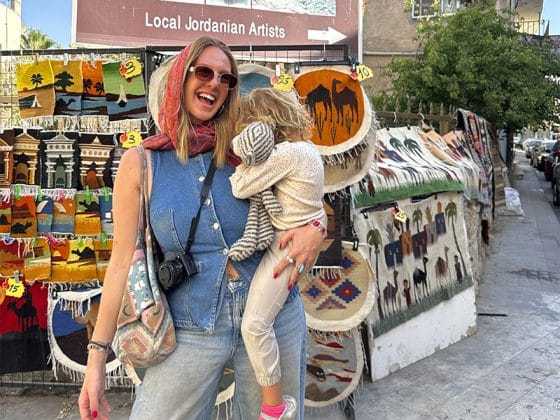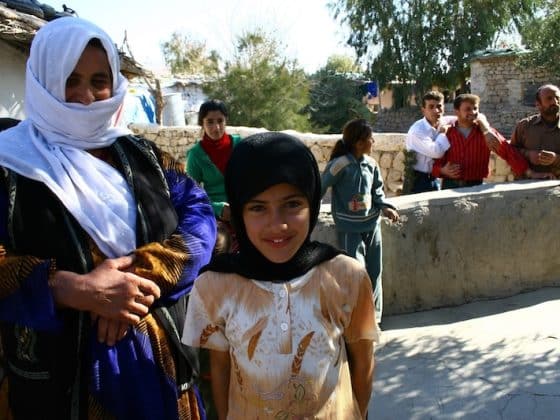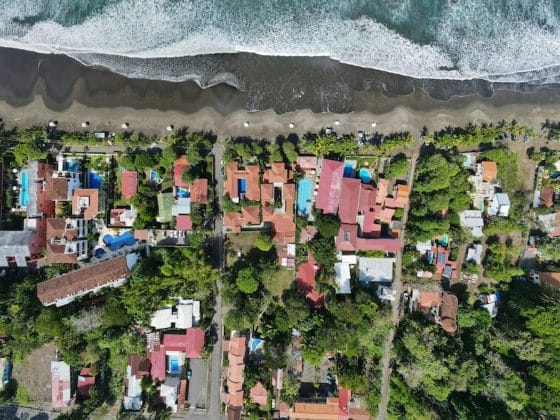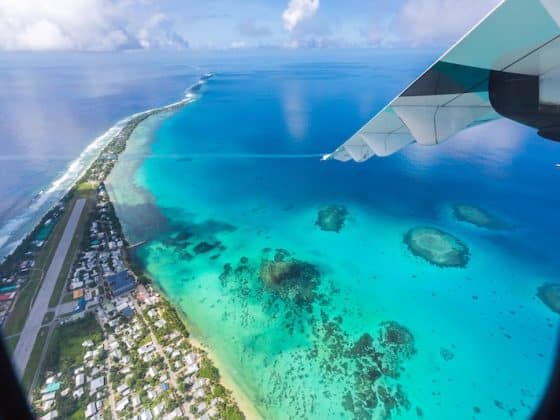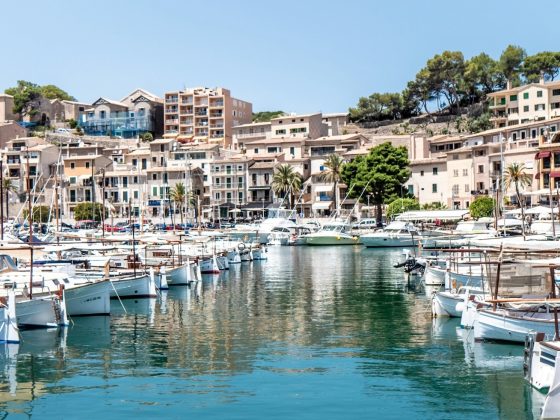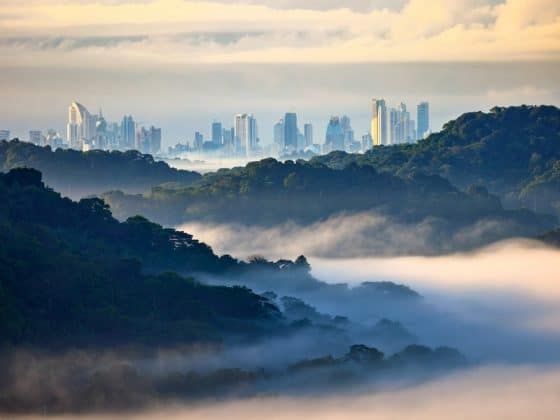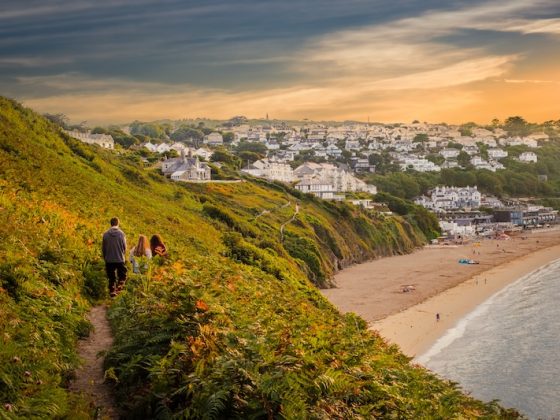Introduction
Café cortados arrive in small glass cups that leave coffee rings on chipped marble counters. Buses growl past murals and laundry lines. In the late afternoon, music spills from an open ventana and a neighbor shouts a greeting in rapid-fire Spanish. This is the daily soundtrack of expat living in Argentina, and it runs deeper than postcards of tango and perfectly plated steak.
Life in Argentina blends Latin American energy with old-world habits. Prices can feel generous if income arrives in dollars or euros, yet inflation keeps everyone checking exchange rates on their phones. Spanish is not just a class to attend but the language of landlords, kiosks, delivery apps and new friends.
This guide walks through what relocation really involves: the costs, the paperwork, the city choices, the cultural shocks and small rewards. Think of it as a field manual for starting a balanced, workable life in Argentina.
Why Expats Choose Argentina
Rich cultural fabric and welcoming society
Argentina is built from layers. Spanish and Italian heritage shows up in the way people speak with their hands, linger over meals and treat tomato sauce like a family heirloom. But walk a few blocks and you’ll pass a Polish social club, a Chinatown supermarket, a synagogue, or a Korean barbecue spot that locals swear by. This mix has shaped cities into mosaics where a Sunday might include empanadas from a corner bakery and an opera performance at Teatro Colón.
Newcomers notice that strangers strike up conversations easily. A chat about fútbol becomes an entire evening shared at a café. People invite you into their circles quickly, especially if you put in effort with Spanish. Friendship is not a formal thing here. It often begins with a mate gourd passed across a table and a promise to meet again. For an expat trying to build a life, a culture that refuses to keep its distance can be a soft landing.
Art also plays a starring role. Murals cover warehouse walls, bookstores stay open late and free public museums fill weekend calendars. Even protests can feel theatrical, with drums, songs and banners turning political expression into street performance. Creativity lives in the open air.
Variety of climates and regions
Argentina stretches across nearly 3,700 kilometers of latitude, so life shifts dramatically from place to place. The pampas roll wide and green, dotted with estancias and grazing cattle. The northwest glows with desert reds and salt flats that stretch toward the Andes. Patagonia swaps heat for crystal lakes, sharp peaks and a sky that feels oversized.
Buenos Aires keeps four seasons in motion: hot summers that make ice cream shops a daily necessity and winters cool enough for scarves. Fly an hour and find another version of the country: Mendoza for wine lovers who want to wake up near vineyards, Córdoba for a youthful vibe fueled by universities, Bariloche for skiing and fireplaces, or coastal towns where Atlantic breezes rule the day.
For expats who crave options, this is a place that supports reinvention. Weekends can mean mountains or ocean. A move across provinces can feel like stepping onto another continent. Travelers often look for the world. Argentina hands them several.
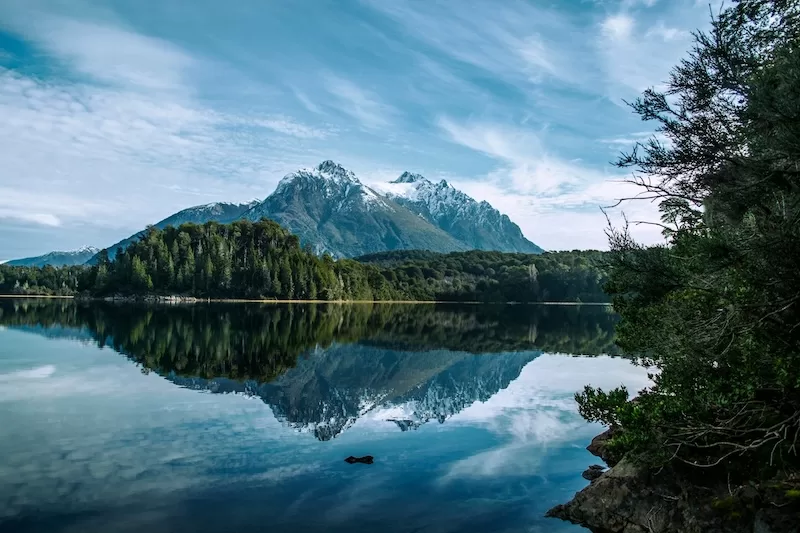
A lifestyle that stretches every dollar
People earning foreign income often discover that daily life becomes more accessible here. A steakhouse dinner is not a splurge. Private Spanish lessons are something you can keep weekly. Public transport takes you across sprawling cities for coins rather than bills. When budgets breathe a little more easily, lifestyles do too.
A destination built for long conversations
This country does not hurry its social life. Restaurants serve late. Dinner begins at an hour that would pass for bedtime in many places. Conversations stretch long after plates are cleared. Time is used to connect. For many expats, that alone shifts priorities in a refreshing way.
Read More Like This: Living in Argentina – The Home Of Tango, Steak, and Soccer
Understanding the Cost of Living
Accommodation and utilities
Housing in Argentina plays out in two currencies. Prices adjust often because landlords track inflation closely, and terms may include periodic increases that locals treat as standard. In Buenos Aires, a one-bedroom apartment in a safe, well-connected area can range from a simple building with terrazzo floors and a balcony above leafy sidewalks to a modern tower with a rooftop parrilla space and a friendly doorman who greets everyone by name.
Based on recent cost comparisons, an 85 m² furnished apartment in an average Buenos Aires neighborhood sits around $750–$950 USD per month, though this shifts with exchange rates and inflation trends.
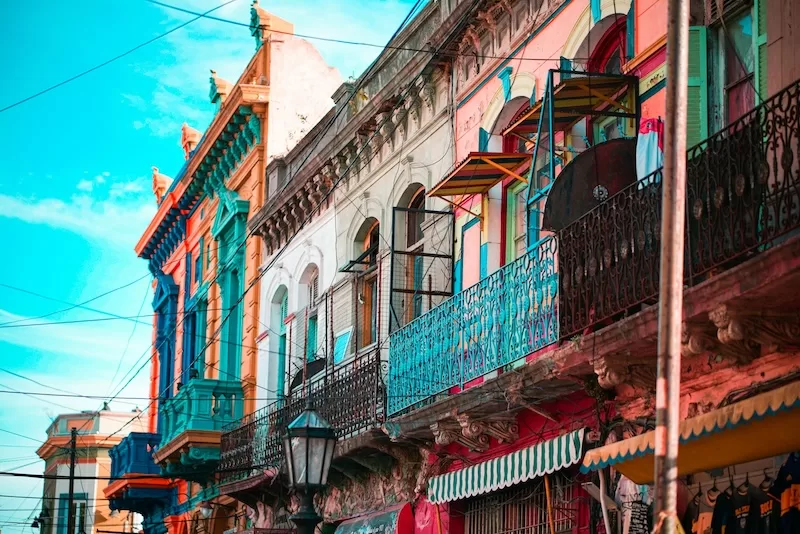
Utilities like electricity and gas stay relatively affordable but rise in winter when heaters run longer. High-speed internet is widely available and usually under $25 USD per month, depending on the provider.
Outside the capital, monthly rents often drop. In Mendoza or Córdoba, apartments offering more space and more silent streets commonly fall in the $500–$800 USD range. Many expats design a full monthly budget of around $950–$1,200 USD including rent, groceries and everyday spending when income is earned in a strong currency.
Smart renters tour neighborhoods block by block, ask about rent increases upfront, check water pressure before signing and look for buildings with reliable heating. Argentina rewards those who dig a little deeper than the first listing.
Food
A café breakfast with a medialuna (sweet croissant) and cortado might land around $3–$4 USD in some neighborhoods. Use of local cafés makes a difference: in major cafés in central Buenos Aires the price of a coffee or snack recently reached around $3.60 USD. A quick weekday lunch, made up of milanesa (breaded meat cutlet), salad and a drink can come in around $6–$8 USD, especially if you pick a non-touristy spot. At cafés you may pick up an empanada for around $1–$2 USD (depending on location, filling and formality) according to local estimates. These lighter snacks mean you can budget in treats without blowing a big chunk of your food spend.
Supermarkets and markets differ in price. Local produce is inexpensive. For example: 1 kg of potatoes might cost approx $0.60 USD, bananas around $2 USD/kg, chicken fillets $7 USD/kg, beef round approx $9 USD/kg. Imported items cost a lot more due to tariffs and logistics. Local cheeses, boutique snacks or branded imports add up quickly.

Neighbourhood ferias (street markets) and fruterías (fruit/vegetable shops) offer seasonal produce at lower cost than big chain supermarkets. The city has a strong culture of buying fresh locally rather than relying only on imported goods.
Steakhouse (Parrilla) Costs and Tips
Eating at a parrilla is part of the Argentine experience, not just dinner. These steakhouses specialise in beef cooked over charcoal, sides shared like family and wine flowing like conversation. Knowing what to expect helps you budget it as an event, rather than a splurge.
Typical costs
- A good cut of beef at a well-rated parrilla in Buenos Aires can range from $35-$70 USD per steak, depending on the cut and restaurant.
- At mid-level places you might get a generous ribeye or bife de chorizo for around $40-$50 USD in a local‐favourite spot.
- At top-tier restaurants (premium location, special wine list, prime cuts) expect higher: for example, one review noted a meal for two at Don Julio that included steak, sides and wine landed at roughly $100-$135 USD in past years.
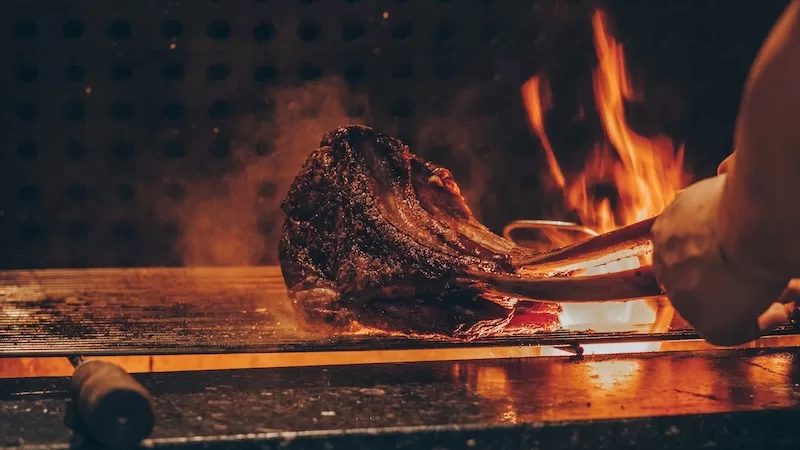
What you’ll typically get
You’ll often share sides, order a starter like provoleta (grilled cheese), pick the main cut (bife de chorizo, ojo de bife, entraña) and finish with flan or ice-cream. A bottle of mid-range Argentinian Malbec might run you $20-$30 USD and pair beautifully with the meat.
Smart budgeting tips for the steakhouse
- Pick your cut carefully. Less expensive cuts such as vacío (flank), cuadril (rump) or skirt steak still deliver flavour and often cost 20-30% less.
- Go for lunch instead of dinner. Many parrillas offer the same cuts at almuerzo (lunch) menus with lower prices and fewer crowds.
- Share a steak between two people and take advantage of sides coming in large portions.
- Choose house wine (vino de la casa) rather than premium bottles.
- Visit a local favourite off the tourist strip. Reviews highlight places where cuts start at lower prices and atmosphere feels more authentic. Sec
- Reserve and check prices ahead. Because of inflation and exchange-rate shifts, menus change. Taking a screenshot or noting the menu helps manage surprises.
In the broader budget
If your “eating out” budget allows for one “parrilla night” per week, you might allocate $40-$60 USD per person. That fits into a monthly budget of, say, $130 USD for restaurants (as earlier table suggested) if you keep other meals lighter and cook often at home.
Transport and everyday expenses
Public transport is famously affordable. A bus ride in Buenos Aires costs well under $1 USD using the SUBE card, which also works on the subway and some regional trains. Rideshares and taxis remain inexpensive enough that late evenings out remain practical.
Clothing and electronics cost more in Argentina than in many countries, especially imported brands or items subject to heavy import duties.
For food and everyday expenses, most expats set aside around $700 USD per month when cooking at home often and saving upscale outings for weekends. Costs rise quickly with imported brands, craft cocktails and frequent steakhouse dinners.

Currency, inflation and financial tips
Argentina’s economy does not sit still. Inflation around 36.6% in 2025 keeps locals checking the price of milk as carefully as the daily weather. Dual exchange rates influence how far each dollar goes, and many businesses update prices weekly just to stay current.
Expats earning in USD or EUR benefit from stronger purchasing power. Remote work remains a popular strategy because salaries paid in pesos can lose value rapidly during economic swings.
Useful money habits include:
• Maintain a buffer in a foreign savings account
• Compare exchange rates before big purchases
• Pay medium-term rent in USD when possible
• Track fluctuations with mobile apps
• Split payments between cash and card for flexibility
Argentina can feel generous for those with foreign income. The key is staying alert and adapting quickly, a skill locals have mastered through lived experience.
Sample Monthly Budget for Expats
Money moves differently in Argentina. A café breakfast that barely dents your wallet one week might creep up in price the next. Rent often includes periodic adjustments. Locals check exchange rates like weather forecasts. Budgeting here means planning with flexibility built in.
Still, predictable patterns exist. Most expats earning in USD or EUR find they can maintain a comfortable lifestyle without overspending. The key is balancing everyday essentials with the small pleasures Argentina does so well: a good steak, a tango show, a weekend in wine country.
Below is a sample month-by-month snapshot for a single person earning in USD and living in a mid-range apartment in Buenos Aires. Think of it as a benchmark as you shape your own numbers.
| Category | Monthly Estimate |
| Rent (1BR, good neighborhood) | $1000 USD |
| Utilities + Internet | $80 USD |
| Groceries | $180 USD |
| Transportation (SUBE + rideshares) | $40 USD |
| Eating out and cafés | $130 USD |
| Healthcare (private plan) | $50 USD |
| Language classes + fitness | $90 USD |
| Entertainment and travel fund | $100 USD |
| Estimated total | $1,670 USD |
Notes:
• Living in Córdoba or Mendoza could reduce rent by $150–$300 USD per month
• Remote workers may add coworking ($60–$100 USD monthly)
• Inflation means these numbers shift, so buffer funds help
Residency, Work & Legal Requirements
Visa and residency overview
Argentina has several residency pathways depending on your situation. Most long-term expats start with temporary residency, which is valid for one year and renewable. After maintaining legal status for two continuous years, many residents can apply for permanent residency. From there, citizenship becomes an option if requirements are met.
A few of the most common visa types include:
• Rentista visa: Ideal for retirees, landlords or anyone with steady passive income earned abroad. Applicants must show reliable monthly income paid into an international account, often from pensions, rental properties or investments. Proof needs to be official and translated into Spanish. The visa is usually valid for a year with renewals available. Many long-term expats begin here because it avoids tying residency to a specific job.
• Work visa: Designed for those with a confirmed job offer from an Argentine company. The employer must register with immigration authorities to sponsor a foreign employee. Paperwork includes contracts, background checks and professional credentials. Salaries are often paid in pesos so budgeting for currency shifts is key. This path benefits anyone who wants deeper local integration through professional life.
• Student visa: Granted to students enrolled in recognized Argentine universities or study programs. Approval requires enrollment documents, proof of funds and health coverage. This visa lets newcomers build language skills quickly and participate in cultural life with a youthful community around them. It also offers a foot in the door to extend residency later.
• Investor visa: For entrepreneurs who commit capital to an Argentine business plan. The government reviews investment proposals and may set minimum investment thresholds that change year to year. This path suits self-starters building income locally rather than abroad. Investors often choose sectors like hospitality, retail, services or agriculture to take advantage of lower operating costs.
• Family reunification: A smooth route if you already have close family ties in Argentina. Having an Argentine spouse, child or immediate family member opens the door to legal residency with fewer financial proofs required. Many expats who start with temporary visas eventually shift to this category when relationships or families develop here.
Applicants must gather official documents like police background checks, birth certificates and income statements, often requiring apostilles and certified Spanish translations. Keeping digital and printed copies helps, since requirements may shift mid-process. Appointments can take time, so many expats hire immigration lawyers to navigate the bureaucracy smoothly.
Legal residency unlocks essentials like opening a bank account, enrolling in health coverage, registering a lease and staying beyond the usual tourist window. It transforms life here from extended travel into long-term stability.
Working as an expat and remote options
Finding a local job as a foreigner can be tough. Many companies pay salaries in pesos, which can lose value fast during inflation swings. Work exists in tourism, tech support, English teaching and hospitality, but competition and pay often push newcomers toward remote work instead.
Remote workers earning in USD or EUR feel a clear lifestyle advantage. Budgets stretch further. Dining out becomes a pleasure, not a calculation. Living in a nicer apartment near parks or nightlife stays within reach. It lets expats enjoy Argentina’s energy without constantly worrying about economic shifts.
Internet quality and remote-work setup
Argentina has widespread high-speed fiber internet in major cities. Buenos Aires, Córdoba and Mendoza all support remote work smoothly. Monthly internet plans typically sit under $25 USD and speeds handle streaming and video calls reliably. In smaller towns, coverage can vary, so checking specific buildings before signing a lease matters.
Coworking spaces have grown dramatically in the last few years. Buenos Aires hosts dozens of options across Palermo, Belgrano, Microcentro and beyond. Expect comfortable seating, strong Wi-Fi, English-friendly staff and fair rates: roughly $60–$100 USD per month for flexible desk access. Some spaces offer rooftop terraces, language-exchange evenings or even occasional wine tastings to help build community.

Family considerations
Schools and healthcare shape many long-term decisions. Public services exist everywhere, but quality changes from province to province. Private healthcare remains popular with expats for faster appointments and more English-speaking staff. A family of three can expect premiums around $2,000 USD per year, with price adjusting by coverage level.
Before accepting work or relocating
• Confirm if your employer sponsors work permits, or if remote work fits you better
• Review tax obligations both in Argentina and your home country
• Begin visa paperwork early and keep digital backups of all documents
• Verify internet stability at your future apartment
• Identify coworking or home-office options that match your routine
Choosing Your City or Region
Buenos Aires
Buenos Aires is the obvious first landing. The city moves with confidence: bookstores piled high, late-night cafés glowing with yellow light, terrazas full of voices long after midnight. Neighborhoods are like small worlds. Palermo blends leafy plazas with cocktail bars and independent shops. Recoleta carries European architecture and weekend craft markets under ancient trees. San Telmo drops into cobbled streets where antique dealers open tall wooden shutters each morning.
Public transport covers the city well. The SUBE card gets you on buses and subways for under a dollar. International grocery items appear more often here compared with other cities. English is heard now and then, especially around expat hangouts, though Spanish unlocks the real version of the city.
Estimated monthly cost for an expat with a modest but comfortable lifestyle lands around $1,000–$1,300 USD depending on rent and nights out. Living central saves time but costs more. Bargains appear in edge neighborhoods with good bus lines.
Best for: Remote workers and culture lovers who want museums, restaurants and nightlife within a short walk. Anyone who enjoys big-city energy and does not panic when traffic honks back.
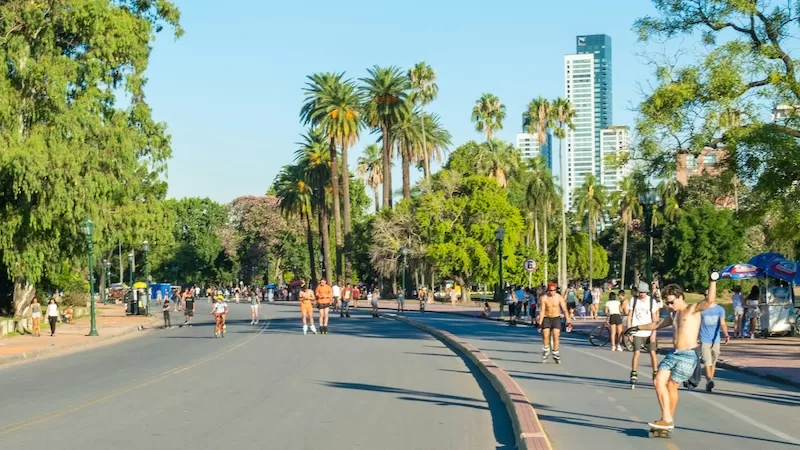
Mendoza
Mendoza rests under the Andes where vineyards stretch toward the horizon. People take their time with wine tastings and afternoons can turn into long-round table chats on shaded patios. The air feels dry and mountain sharp.
Apartment hunting reveals spacious options in calm neighborhoods for $500–$800 USD per month. Outdoor lovers appreciate that weekend adventures include hiking, rafting or a quick bus ride to wineries. The pace allows for deeper immersion in Spanish, because fewer people will switch to English to help you out.
The food here revolves around beef, olive oil and Malbec. The sunsets redden the sky so deeply it looks painted on. The tradeoff: less international nightlife and fewer English-language comforts. But many expats find the reward far greater.
Best for: Wine enthusiasts, nature seekers and those who want affordability with scenery that refills the soul.

Read More Like This: Mendoza, Argentina: A Haven for Wine Tourism
Córdoba
Córdoba has a young heartbeat. University students fill its cafés with group projects and excited debates. Music pours onto city streets on weekends. Old colonial architecture stands near modern offices and tech start-ups, which gives the city a layered, lived-in look.
Costs feel friendlier than Buenos Aires. Rent often falls in the $450–$700 USD range. Public transport is widespread. Spanish immersion comes fast because English help appears less frequently outside tourist corners. Cultural life includes classical concerts, outdoor festivals and an active nightlife around Nueva Córdoba.
Walk fifteen minutes and suddenly the city opens into countryside views. Day trips to valleys, rivers and hiking routes keep free days full. It is a place that manages to feel both lively and local.
Best for: Students, English teachers and young professionals who want a city with energy, yet still within reach of nature.
Bariloche
Bariloche sits beside bright blue lakes and mountain peaks that dust with snow in winter. Wooden chalets and chocolate shops give it a ski-town charm. Seasons shift the mood entirely. Summer brings kayaks and hiking, winter fills the slopes with people in thermals and big smiles.
Rents climb here compared to other provincial cities, averaging $650–$900 USD for places near the center or lake views. Tourism keeps restaurants, breweries and outdoor gear shops in business year-round. Long walks become daily habit because every direction leads to fresh scenery.
Spanish practice comes naturally when chatting with hiking guides or neighbors who are passionate about local nature. It is quieter at night than the big cities but mornings feel crisp and full of possibility.
Best for: Outdoor adventurers, digital nomads seeking fresh air and anyone who wants daily life to double as a postcard.
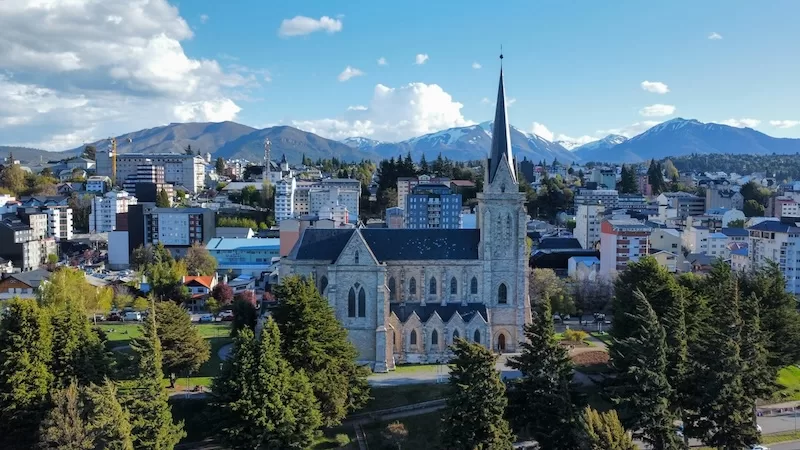
Rosario
Rosario is a river city with grit and charm holding equal ground. The Paraná River carves a wide blue border along its edge, where runners and cyclists move past palm trees and weekend picnics. The city has a strong arts scene and plenty of independent businesses, from vintage shops to hidden cafés behind unmarked doors.
Rents typically fall in the $450–$700 USD range for a comfortable one-bedroom, especially outside the polished waterfront districts. Rosario tends to be less touristy than other major cities, which means Spanish becomes a daily workout. Locals are known for passionate opinions, especially when the conversation turns to fútbol or politics.
The reward here: a city that feels genuinely Argentine, without a polished veneer for visitors.
Best for: Expats who want authenticity, creative energy and a lower cost of living without slipping into a sleepy town pace.
Mar del Plata
Mar del Plata wakes up to waves. The Atlantic breeze carries a salty freshness into the city and surfers line up at dawn for the day’s first ride. In summer, crowds fill the beaches and seafood restaurants burst with conversation. In winter months, the coastline belongs to locals again and days get a little more serene.
Apartments near the beach range from $500–$850 USD, with prices climbing in peak season. The seafood scene is strong and afternoon walks along the boardwalk become part of the weekly routine. While English is heard more often than inland towns, Spanish remains key for navigating life beyond the tourist strips.
Tourism drives the economy so jobs tied to hospitality come and go with the weather. Remote workers appreciate that nature steals the spotlight without eliminating city comforts.
Best for: Beach lovers, surfers and remote workers who want an ocean view without paying Miami or Barcelona prices.
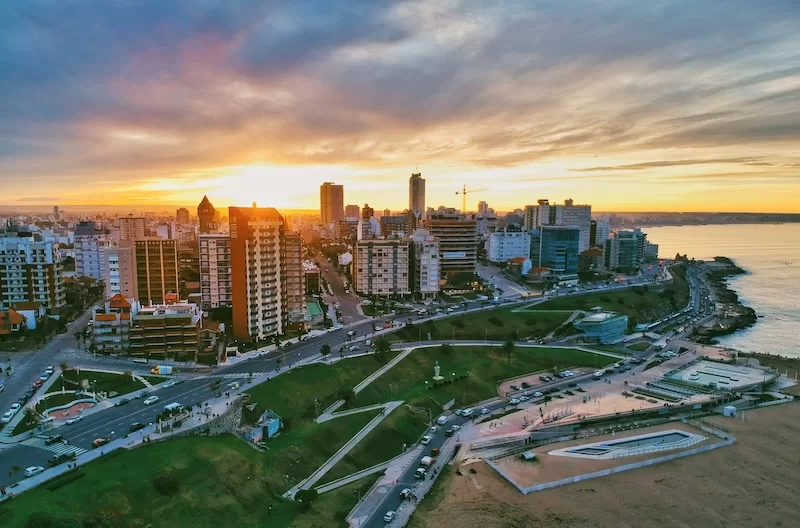
Quick Comparison at a Glance
| City | Lifestyle vibe | Typical rent (1BR) | Language immersion | Outdoor access |
| Buenos Aires | Fast, cultural, international | $750–$950 USD | Moderate | Limited inside the city |
| Mendoza | Calm, scenic, wine country | $500–$800 USD | High | Excellent |
| Córdoba | Dynamic, youthful | $450–$700 USD | Very high | Very good |
| Bariloche | Nature-driven, seasonal | $650–$900 USD | High | Exceptional |
| Rosario | Creative, authentic, urban | $450–$700 USD | Very high | Good riverfront access |
| Mar del Plata | Coastal, energetic in summer | $500–$850 USD | Moderate-high | Strong, beach-focused |
Read More Like This: Most Popular Places in Argentina for Expats
Culture, Language & Integration
Thriving in Argentina relies on Spanish more than many expect. It is the language of landlords, market vendors, delivery apps and casual street compliments. Even a short conversation at the bakery can turn into a full breakdown of fútbol scores or weekend barbecue plans. English appears in international circles but everyday life prefers the musical lilt of Argentine Spanish, with its soft “sh” sounds and a tendency to turn simple phrases into poetry.
Tango still pulses through city plazas and neighborhood dance halls. Beginners are welcome almost anywhere. A few lessons help unlock a social world where conversation and movement come together, and friendships grow through shared missteps and laughter.
Social interactions are warm and physical. Friends greet with a kiss on the cheek, even on the first meeting. People stand close in conversation and eye contact is not optional. Plans are often flexible. Ahora might mean now, but it can also mean soon. The culture values presence more than punctuality. It takes patience, curiosity and a sense of humor to adapt, yet the reward is feeling less like a visitor and more like someone who belongs.
A few survival habits help with the shift:
• Take weekly Spanish classes for structure
• Keep a notebook of slang, because porteños speak fast
• Learn how to order mate and accept it when someone offers a sip
• Recognize that queues move slowly and conversations move fast
Community, expat networks and local friendships
Argentina offers built-in places to meet people. Language exchanges fill neighborhood bars. Dance studios open late so beginners can step awkwardly into tango, as it becomes both hobby and social shortcut. Futbolito games, cooking workshops and photography meetups all help newcomers find their footing.
Expat communities exist in every major city, especially Buenos Aires. They provide comfort, familiar references and advice when residency paperwork feels endless. But the deeper friendships usually happen when you step outside that expat bubble. Joining a gym where nobody speaks English, saying yes to an asado invitation, or playing pickup fútbol at the park create real belonging.
Cafés often turn into social hubs. Sit with a book long enough and someone will ask what you are reading. By week two, the barista remembers your order and the family at the next table introduces you to their cousin who lived in Italy and wants to practice Italian Spanish hybrids. Argentina has a way of pulling you into its social life if you allow it.
The secret to integration is not complicated. Show up. Learn the language. Eat with people. And let the country’s warm chaos reshape a bit of your internal clock.

Pros and Cons Snapshot
Pros
• Everyday life feels more accessible when earning in USD or EUR
Dining out, cultural events, local travel and private services often remain comfortably within reach compared to North America or Western Europe.
• A culture that prioritizes connection over rush
Conversations stretch, neighbors greet you by name, and social rituals like mate or Sunday asados help newcomers feel rooted.
• Diverse settings for every lifestyle
Mountains, wine valleys, colonial cities, glacier lakes and beach towns allow expats to choose the pace and scenery that fits them. Quick regional flights or long-distance buses make exploring affordable.
• Strong public culture
Free or low-cost museums, music, plazas and festivals keep weekends full. Argentina treats the arts as part of daily life, not a luxury.
• Community is easy to find
Between expat groups, language exchanges and a naturally social population, friendships are not hard to build if you show up.
Cons
• Economic swings are constant
Inflation, shifting exchange rates and rising prices require steady attention and flexible budgeting.
• Local wages rarely match costs
Jobs paid in pesos can lose purchasing power quickly. Most expats do better financially with remote work or foreign income.
• Paperwork moves slowly
Residency processes, translations, apostilles and government office visits take time and patience. One missing document can delay everything.
• Imported goods and tech can be pricey
Electronics, specialty foods and some household items cost more due to import restrictions.
• Major cities bring real noise and bustle
Traffic, bus horns and night owls are part of the rhythm. It is thrilling to some, tiring to others.
Your Argentina Relocation Timeline
Planning a move abroad can feel like juggling bureaucracy, housing searches and big emotions all at once. This timeline breaks the journey into clear phases so the process becomes manageable, not overwhelming. Instead of scrambling once you land, you can arrive with confidence that every major step already has a place in your plan.
3–6 months before moving
• Choose your city and neighborhood style
• Research visa category and gather official documents
• Request police background checks and apostilles
• Secure long-term remote income or confirm job sponsorship
• Start budgeting in USD with inflation buffers
• Begin Spanish lessons once a week (minimum)
• Join online expat communities for on-the-ground insight
2–3 months before moving
• Submit visa paperwork or begin residency appointments
• Finalize housing search strategy: short rental first vs. long lease
• Scan copies of all documents, upload securely
• Price out private healthcare plan options
• Book flights strategically (avoid peak January/July rush)
1 month before moving
• Notify banks, set travel alerts, confirm foreign transaction fees
• Plan for cash on arrival ($300–$800 USD) to bridge first days
• Arrange temporary accommodation (2–4 weeks buffer)
• Download essential apps (SUBE-related, delivery, translation, taxis)
• Set up international phone plan or esim ready to activate
Arrival week
• Obtain prepaid SIM card at the airport
• Get SUBE transport card immediately
• Visit neighborhoods daily to confirm where you want to live
• Schedule in-person apartment tours
• Attend a language exchange or community meetup night one
First 30 days
• Open bank account if residency permits
• Sign a medium-term rental with clear terms about rent increases
• Continue visa appointments and document updates
• Register with a GP or private clinic near home
• Join gym, studio, coworking space or sports group to build friendships
• Take a weekend trip (wine route, coast or Andes) to reset
3–6 months after arrival
• Review spending and adjust for inflation shifts
• Increase Spanish lessons to twice a week
• Explore two other provinces to understand long-term fit
• Renew residency if required
• Consider longer lease once neighborhood certainty rises
What this timeline gives you
Confidence comes from knowing what happens next. By following these steps, you protect yourself from last-minute paperwork problems, rushed housing decisions and avoidable financial stress. You also create room to enjoy what brought you here in the first place: conversations in a new language, friendships that start over coffee, scenery that feels too big for camera frames. The practical side of your move supports the life you came to build, not the other way around.
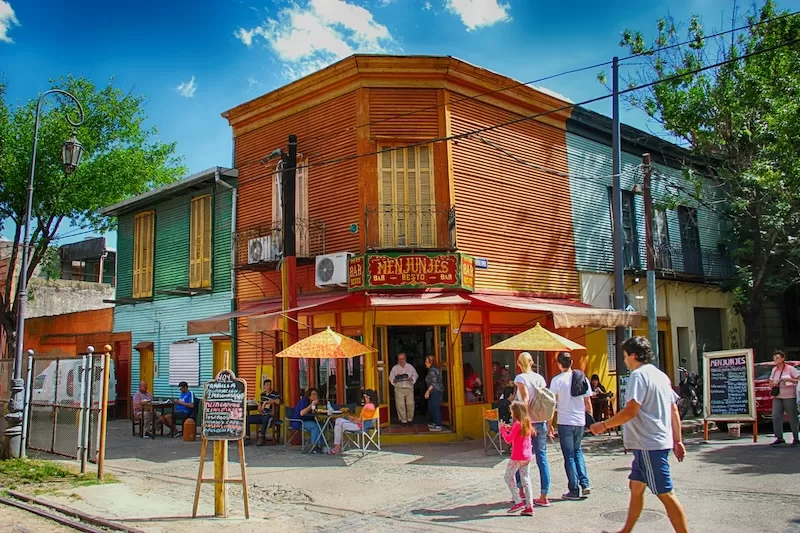
FAQs
Q1. How much money does an expat need per month in Argentina?
Most single expats estimate $950–$1,400 USD monthly to cover rent, groceries, transport and a few nights out. Those living outside Buenos Aires may land closer to $700–$900 USD. Remote income in USD or EUR helps maintain predictable buying power.
Q2. Do I need to speak Spanish to live comfortably in Argentina?
Not strictly required, but Spanish unlocks real life: apartment rentals, doctor visits, friendships and grocery chats. Even beginner conversation skills increase confidence and comfort dramatically.
Q3. Can expats get citizenship in Argentina?
Yes. After about two years of continuous legal residency, foreigners can apply for citizenship. Children born in Argentina become citizens immediately, which simplifies residency for parents.
Q4. How safe is Argentina for expats?
Safety varies by city and neighborhood. Buenos Aires feels lively and urban, so usual big-city awareness applies: watch your phone, avoid flashing valuables, use official taxis late at night. Smaller cities often feel calmer, though petty theft still exists.
Q5. How stable is the economy for foreign residents?
Inflation and currency swings are part of life here, so build flexible budgets and stay informed about exchange rates. Expats earning in foreign currency feel the least financial pressure.
Q6. Can expats open bank accounts in Argentina?
Yes, but most banks require DNI (residency ID) to open an account. Many newcomers rely on international cards and cash until residency is finalized.
Q7. Is healthcare affordable and reliable?
Public hospitals operate nationwide and emergency care is available to everyone. Many expats choose private coverage for faster service and more English-speaking providers. Plans start around $40–$70 USD monthly per adult depending on coverage tier.
Q8. Are there strong expat communities in Argentina?
Buenos Aires, Mendoza, Córdoba and Bariloche all have active international groups, language exchanges and social networks. Locals are friendly, so integrating beyond expat circles is usually smooth with basic Spanish and curiosity.
Q9. Can I bring my pets when moving to Argentina?
Yes. Health certificates and up-to-date vaccinations are required. Many rentals accept pets, especially in older buildings with balconies or near parks.
Q10. What is public transportation like?
Reliable and cheap. A bus ride or subway trip in Buenos Aires usually costs under $1 USD using a SUBE card. Long-distance buses cover the entire country and provide comfortable travel between regions.
A New Chapter Under Southern Skies
Argentina invites you to notice things again. Waking up to fresh alfajores for breakfast. The clink of small coffee cups on marble counters. Neighbors trading greetings from balconies. Bus rides that show you parts of the city you have not met yet. The joy of learning a word in Spanish that suddenly helps you belong a little more than yesterday.
The move takes planning. Documents, budgeting, language awkwardness at the start. But the reward is a daily life that feels wider and more textured than the one you left. This is a country that gives as much as you are willing to join in. It invites curiosity. It rewards patience. It celebrates presence.
If you’re serious about making it work, start today: subscribe to our newsletter for insider updates on visas, housing, and local life. Your new chapter is just waiting for you to write it.
Contact Author
"*" indicates required fields
Stay Ahead on Every Adventure!
Stay updated with the World News on Escape Artist. Get all the travel news, international destinations, expat living, moving abroad, Lifestyle Tips, and digital nomad opportunities. Your next journey starts here—don’t miss a moment! Subscribe Now!

